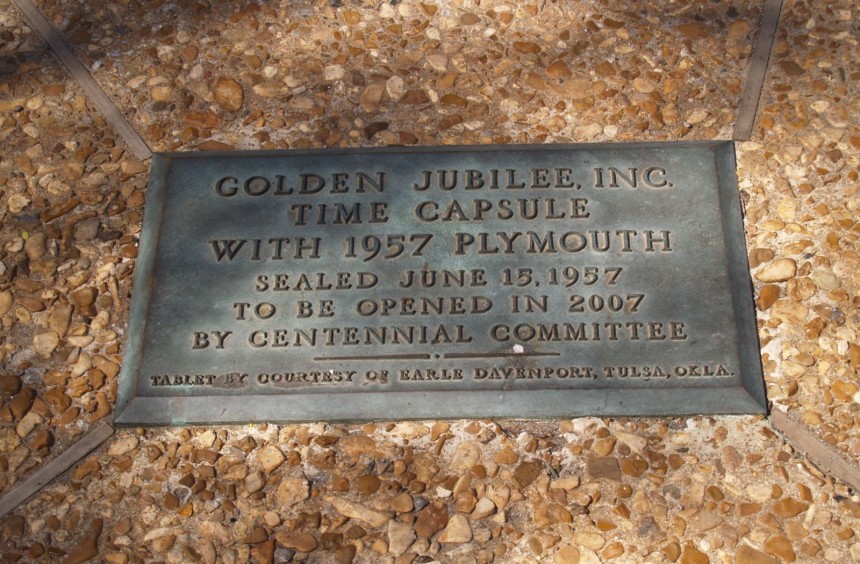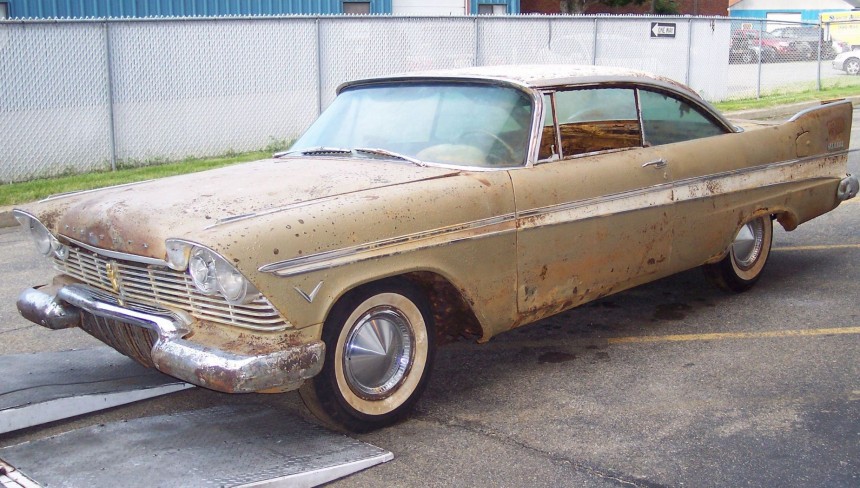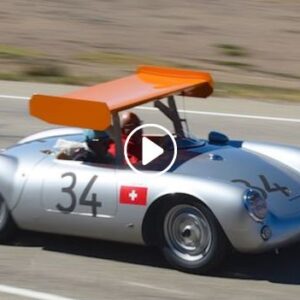Throughout history, information or goods were preserved for future generations using so-called time capsules. Among the biggest and most unusual of them went underground in the late 1950s containing a brand-new Plymouth Belvedere.
The year was 1957 and the U.S. state of Oklahoma was commemorating fifty years of existence. Many communities planned their own events, and the city of Tulsa was no different, kicking off a week-long festival named Tulsarama.
To make things more interesting, officials decided to bury a time capsule in front of the city courthouse, but this was no ordinary cache of goods or information. For whatever reason, they chose to include a brand-new desert gold and sand dune white two-tone 1957 Plymouth Belvedere Sport Coupe inside the vault, along with other contemporary items.
A contest was organized with citizens being invited to guess Tulsa’s population in 2007. The person (or their descendant) who came nearest to the actual number would win the car upon its unearthing fifty years later, as well as a savings account started with a $100 deposit.

Donated by Plymouth Motors and a group of local dealers, the Belvedere with only four miles on its odometer was filled with various items from the period such a case of Schlitz beer, an unpaid parking ticket, a pack of cigarettes, a tube of lipstick, a package of gum, and $2.73 in bills and coins. Organizers also placed a five-gallon (22.7-liter) container of gasoline and another one filled with motor oil to help start the car in case the world would abandon fossil fuels in the future.

To make sure that the car survives in good shape for the next fifty years, a12 feet (3.7 m) by 20 feet (6.1 m) underground concrete vault with pneumatically applied gunite on its interior walls was constructed in front of the courthouse. The top of the enclosure was three feet (0.9 m) below the surface and the builders advertised it as being able to withstand a nuclear attack.

On June 15, the beautiful coupe was placed on a steel skid and lowered inside the vault. It was coated in a military-grade corrosion-proof substance and then wrapped in layers of sealed plastic. A huge one-piece concrete lid was placed on top of the structure, after which everything was properly sealed with gunite. Three feet of dirt was ten poured over it and for the finishing touch, a bronze marker donated by a local cemetery was placed on the spot.

Eighteen months before the state’s centennial, preparations for the highly anticipated unearthing began. The vault was opened on June 14, 2007, by a team of local volunteers. They were appalled to find the car sitting in nearly 2,000 gallons (7,600 liters) of standing water that reached 4 feet (1.2 m) high. While the original builders did their best to create a lasting structure, it was not airtight, which allowed water to seep in when the area was flooded due to a construction accident back in the mid-1970s. Still, since the car was covered in plastic, people were still hopeful that it wasn’t completely destroyed.

The standing water was eventually pumped out and the Plymouth was lifted from the vault, then moved to the Tulsa Convention Center, where it was publicly unveiled on June 15th, exactly fifty years after it was buried.

As you can see, thanks to a local journalist and photographer Michael Bates who was present at the event, Miss Belvedere was badly damaged, yet still standing. The tires were in good enough shape to be inflated, the signatures of those who were on hand when it was buried were still readable, and some of the items placed in the trunk like the beer cans or the gas and motor oil containers were rusty, but still in one piece.

After the ceremony, the coupe was temporarily displayed at a local dealership while it awaited its new owner. His name was Raymond Humbertson, one of 812 residents who participated in the 1957 contest. Unfortunately, Humbertson had passed in 1979, followed by his wife nine years later. The couple had no children, so the car, along with the savings account which had grown to $667, was awarded to his 100-year-old sister Catherine and her nephews.
Later that year, the new owners were approached by Dwight Foster, the owner of Ultra One, a company specializing in high-quality rust removal products, who offered to de-rust and stabilize the car free of charge. They accepted and after a painstaking process that lasted several months, Miss Belvedere’s bodywork was rust-free. You can watch a video of the preservation process below, courtesy of NJ.com.

Still, the damage was so extensive that a full restoration was deemed impossible. The engine, frame, and interior were unsalvageable, so the car remained in the company’s warehouse for the next decade. Foster searched for a new home on behalf of the owners and in 2015, he announced that the famed coupe would be permanently displayed at the Historic Auto Attractions Museum in Roscoe, Illinois, the place where it resides today.
Contrary to popular belief, the vehicle wasn’t named Miss Belvedere back in 1957, but fifty years later. During 2007 interviews, organizing committee co-chairwoman Sharon King Davis admitted that she was responsible for the moniker.
The city of Tulsa didn’t stop there and put another Plymouth inside a time capsule back in 1998. However, the Prowler buried in Centennial Park was placed inside a pressurized plastic box filled with argon and, according to experts, it stands a much better chance to be preserved than its 1957 sibling. We’ll have to wait another 27 years to see how it held up.





